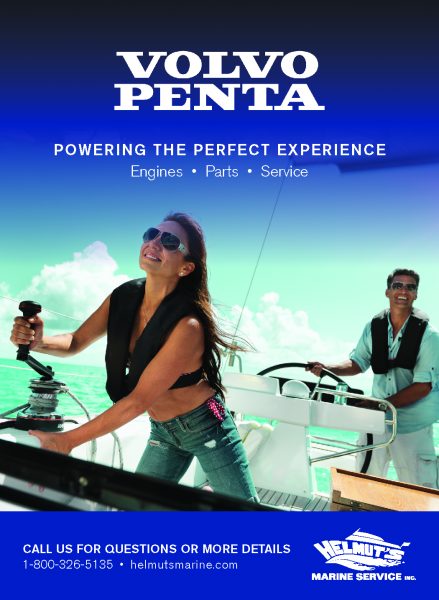
Rolex Sydney Hobart Runs Down the Coast of Australia
The 77th edition of the Rolex Sydney Hobart yacht race was a thriller from start to finish. About 110 boats took the start on December 26, including four 100-ft supermaxis. There was much pre-race speculation about the battle for line honors, handicap honors, and a potential course record. As well as a solid fleet of the usual suspects, this year’s Sydney Hobart included a doublehanded fleet for just the second time. It’s the first time that the typically smaller doublehanded entries have been eligible to win the Tattersall Cup for overall handicap honors.
Supermaxi Quartet
Departing Sydney Harbour on a typical glamour day under bright, sunny skies and a stiff northeasterly, the fleet wasted no time in creating the type of drama for which it has become famous. After a tacking duel that involved no shortage of protest flags, penalty turns, and colorful language, the legendary supermaxi Hamilton Island Wild Oats rounded the top mark first to begin the long run down the east coast of Australia toward Tasmania.
Once offshore, John Winning Jr.’s VPLP 100 Andoo Comanche and Christian Beck’s Juan K 100 LawConnect wasted no time in blowing past the two R/P 100s Hamilton Island Wild Oats and Black Jack. Sailing down the coast at speeds approaching 30 knots, Andoo Comanche flirted with her own record pace from 2017 in the early stages of the race, but in the end finished some 2 hours and 40 minutes behind the record with an elapsed time of 1 day, 11 hours, 56 minutes. LawConnect finished some 25 minutes astern. Peter Harburg’s Black Jack came in another 15 minutes later. Both Andoo Comanche and LawConnect finished with protest flags flying.
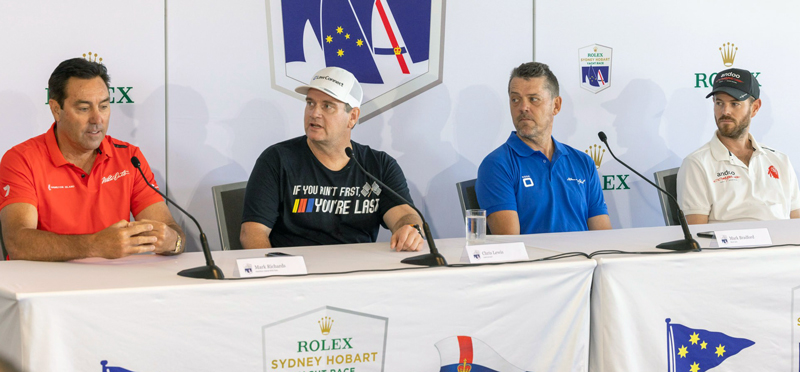
While the 100-ft supermaxis typically dominate the media’s coverage of the race, they rarely win the Tattersall Cup. This year would be no different. With a building northerly that would be replaced by a typical southerly buster, the winning boats would likely be those that were just fast enough to make the run to Tasmania before turning the corner and romping along Storm Bay and up the River Derwent on the new southerly breeze. As is often the case in offshore yacht racing, the right horse for the course would prove to be the TP52, which would capture the top five spots in the overall rankings under IRC.
TP52 Fleet
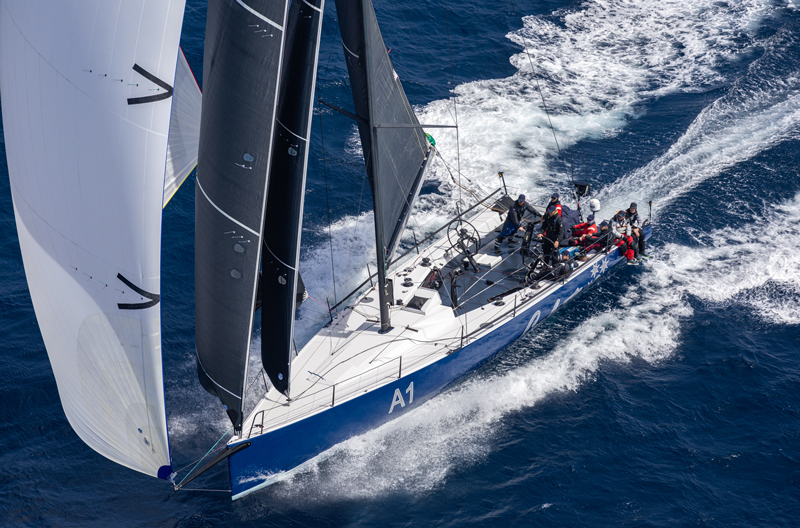
After many years of campaigning for the Sydney Hobart, Sam Haynes and his crew on Celestial sailed into Hobart to claim a well-earned and popular overall victory. After they finished first last year then lost that win in the protest room, this year’s victory for Celestial is extra sweet. Second place goes to Matt Donald and Chris Townsend’s TP52 Gweilo. Maximillian Klink’s brand-new TP52 Caro rounded out the podium. Chris Sheehan’s Newport, RI-based TP52 Warrior Won claimed fourth overall with a largely American crew that included the Bay Area’s Hartwell Jordan. Craig Neil’s TP52 Quest would claim fifth place overall on IRC.
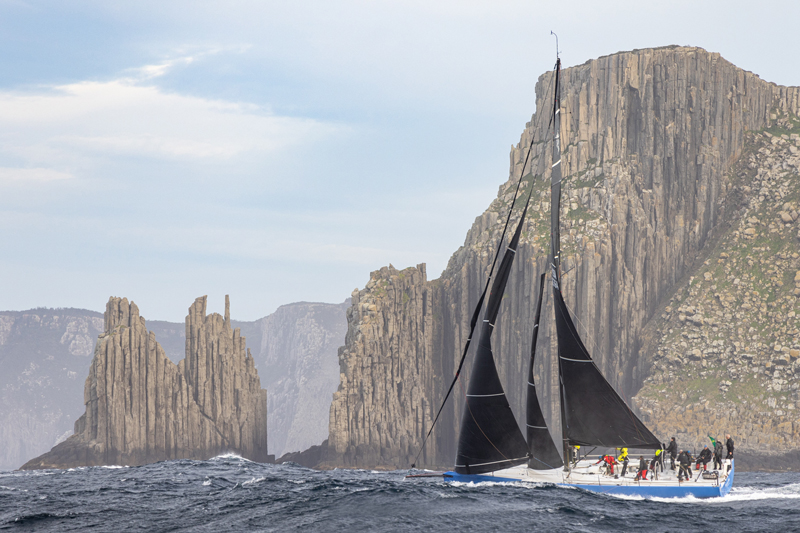
Still on the Course
Although the handicap winners have largely been decided, many boats remain on the course. A handful of divisions are still up for grabs. While the TP52s and faster boats were able to turn the corner and finish in the southerly, everything slower than a TP52 had to beat into the southerly and was therefore relegated to a lower overall ranking. One of the pre-race favorites, Thomas Kneen’s UK-flagged JPK1180, which won the Fastnet Race and placed second in the Middle Sea Race, is currently leading IRC Division 3, though she’s hovering in the mid-20s on IRC overall.
Currently leading the doublehanded division is Lee Condell’s brand-new Jeanneau 3300 SunFast Racing, with former stand-up paddleboard world champion Lincoln Dews as co-skipper. Veteran skipper Ed Psaltis — who won the tragic 1998 edition — is racing in his 40th Hobart race and is currently leading IRC Division 4 on his Sydney 36 Midnight Rambler. For more details, make sure to check in with www.rolexsydneyhobart.com.
Good Jibes Episode #71: A Christmas Tale — “Bay Is Salt” (Verbatim)
We hope you’ve enjoyed this month’s stories from the magazine. As this is our last Good Jibes for the year, and it is Christmas week, we decided to tell you a Christmas tale as it appeared in the pages of Latitude 38 in December 1977. This week’s host, Monica Grant, reads a special Christmas tale, “Bay Is Salt.”
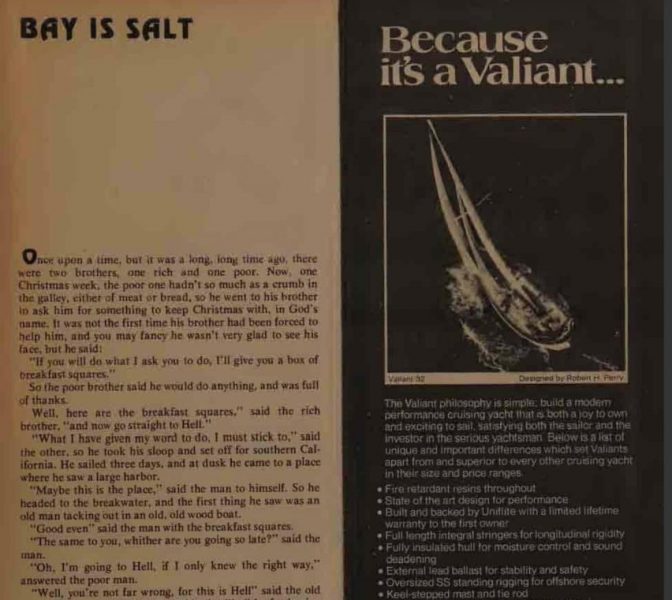
This episode covers everything from breakfast squares to Marina del Rey. Here’s a small sample of what you will hear:
- What are breakfast squares?
- How do you sail to Marina del Rey?
- What makes a good Christmas dinner?
- Where did the poor brother get his wealth?
- Why did the winch keep grinding?
- What did the rich brother regret?
- Could the winch grind salt?
- Why is the Bay salt?
Follow along and read the article at https://www.latitude38.com/issues/december-1977/#10.
Listen to the episode on Apple Podcasts, Spotify, Google Podcasts, and your other favorite podcast spots — follow and leave a 5-star review if you’re feeling the Good Jibes!
Power the Perfect Experience With Volvo Penta
Call for more details 1-800-326-5135, or visit helmutsmarine.com.
Greetings From Sidney, British Columbia
While the winter solstice has passed, meaning the sun is headed our way for the upcoming summer, you wouldn’t know it from this shot of Jerry Keefe and Allison Lehman’s Sabre 426 Kingfisher. She’s waiting out the winter in Sidney, British Columbia, as she awaits her owners so she can start her Pacific Northwest summer cruising.
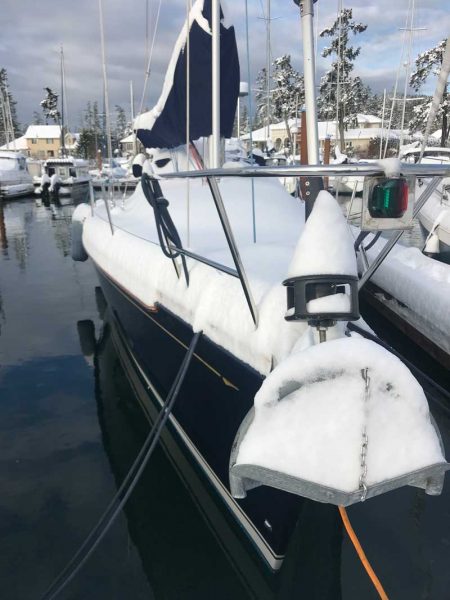
While it’s typical for most Bay Area sailors to be dreaming of heading out the Gate and turning left, inexplicably, a good number turn right to trade palm trees for pine trees. We’re told summer in the San Juan and Gulf islands is filled with scenic, unspoiled anchorages, wildlife, and endless opportunities to explore the intricate coastline of the Pacific Northwest. The days are as long in the summer as they are short in the winter. The winds tend to be light, but the warm air and variety make it a popular cruising and charter destination.
We look forward to seeing some photos of summertime sailing in the Pacific Northwest. And everywhere else, too…
Enjoy a Little Holiday Interlude With Salty Phrases — Part 2
Just after Thanksgiving, we shared the origins of some Salty Phrases — sayings that have been repeated by sailors, and sometimes landlubbers, for generations. Many times we wonder where these often-unusual sayings originated. Well, wonder no more, because below we share Part 2 of our Salty Phrases list, compiled by Latitude editor John Riise (JR), “back in the old days.” (Where did that phrase originate?)
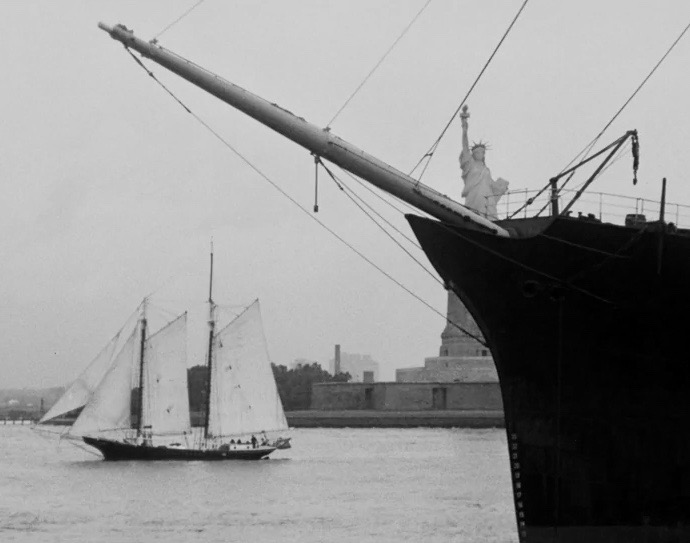
Even Keel and Listless: We mention these together because, while they describe a similar condition, they have opposite meanings, both afloat and ashore. A ship on an “even keel” is calm and steady, and that’s what it means in everyday language. However, a ship on an even keel is often that way because there is no wind. No wind — no list. And life aboard is boring when the ship is listless. As it is ashore.
Flying Colors: If you pass a test with flying colors, you have done about as well as you could have. It was the same in the days of fighting sail. A ship entering harbor with “flying colours” — meaning with most of its flags flying — indicated it had been victorious in battle.
Feeling Blue: Today’s phrase for feeling sad came from an old custom among sailors — if a ship had lost a captain or other crew members, she would often enter port flying blue flags.
Hard and Fast (and hard up): A hard-and-fast rule means one that is inflexible. In the old days, hard and fast meant a ship that had run aground and couldn’t get free, which was also a pretty inflexible situation. Hard up, derived from the same predicament, means in a fix with no obvious way to get out of it.
Hodgepodge: The original meaning of hodgepodge was literally “stew pot,” and everyone knows there’s a little bit of everything in stew. When the term made its way aboard sailing ships, it came to mean the equal division of cargo and/or property damaged when two ships collided and both bore equal responsibility.
Hunky Dory: There was, at one time, a street in Yokohama, Japan, called Honki-Dori, which catered to the pleasures of sailors. Enough said.
Jury Rig (often incorrectly written and pronounced “jerry rig”): A jury rig is a make-do repair until a complete fix can be made. It derives from the practice of replacing a mast or spar that has broken or been lost overboard with whatever materials one can find. The word may derive from “injury,” but more likely comes from the Old French ajurie — “help” or “relief.”
Keep Your Shirt On: Shirts were often in short supply in the old days, and a typical sailor might only have the one on his back. If he was going into a fight — with the enemy or another sailor — he would remove his shirt so as not to mess it up. So “Keep your shirt on” came to mean “Calm down, I don’t want to fight you.” Today, ashore, it means much the same thing.
Long shot: In the old days, cannons weren’t very accurate at long range. So a long shot was always a gamble with only a slim chance of success — as it is today in common usage.
Loose Cannon: Today it means crazy person. In the days of fighting sail, it meant the craziness that happened when a two-ton cannon broke loose of its lashings and started rolling back and forth across the deck.
Stay tuned for Salty Phrases Part 3. And if you missed Part 1, you can find it here.

